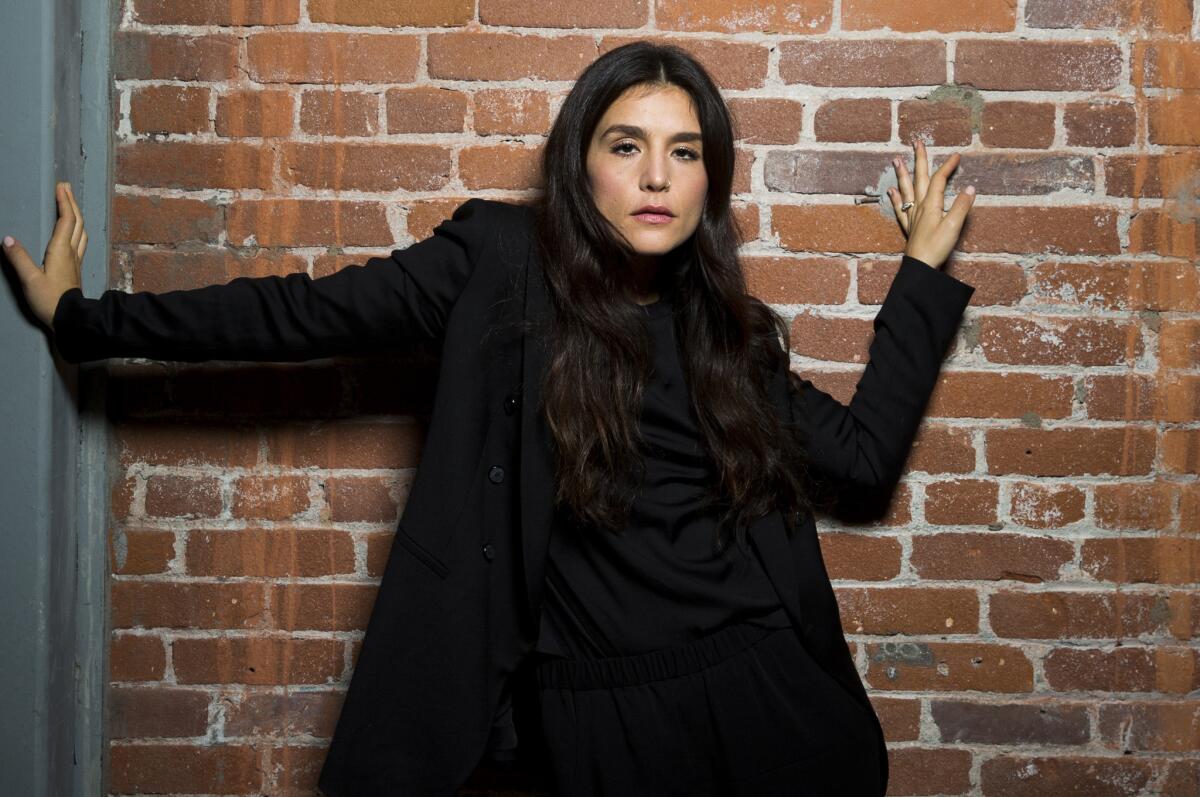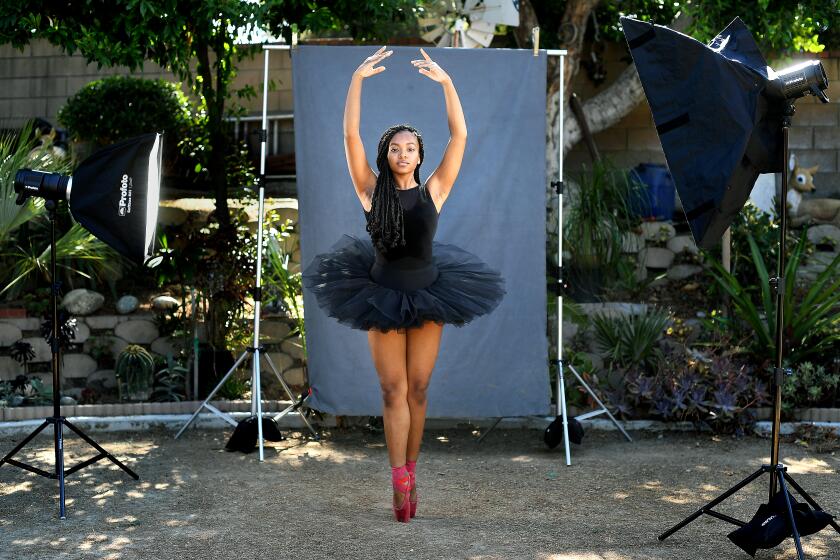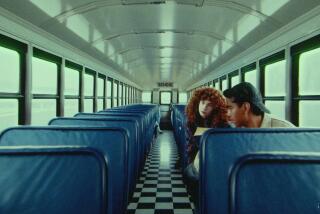How Jessie Ware’s stunning new disco dance videos were shot in quarantine

Inside a seedy-looking motel room, a dancer sashays, twirls and vogues alone to the pulsating bass line and sultry lyrics of Jessie Ware’s “What’s Your Pleasure?” In the nearly five-minute video, dancer Nicolas Huchard plays a game of seduction with the camera while wearing different outfits of leather, lace, satin and fringe.
This is the COVID-era dance visual for the title track of Ware’s latest album, released in June. She’s part of a wave of pop artists like Kehlani, John Legend and Haim who have found new ways to create music videos during the pandemic.
Over the last few months, the British singer-songwriter has released a steady stream of intimate, dance-centered videos to accompany the disco-inspired album she describes as “feminine and dramatic and verging on camp and fabulous and direct.”
Before global shelter-in-place orders, Ware began working with Parisian choreography and art direction duo I Could Never Be a Dancer, composed of Carine Charaire and Olivier Casamayou. They were hoping to solidify a through line of dance in her music videos that had a feeling of “camp-ness and swag,” inspired by Ware’s love for the FX show “Fosse/Verdon.”

In January they shot her first video “Spotlight” with a cast of dancers in a narrow train car in Serbia.
“We were going to keep on doing choreography stuff that isn’t too hard because I am not a professional dancer,” Ware said. “I wanted that feeling of people could learn the dance and bring it to my shows so that we could do it together.”
But there would be no traditional rollout of the album.
And when it became clear the pandemic would totally upend typical album promotion, Ware convinced her label to release visuals for songs on the album, trading sleek music videos for something more feasible within the confines of quarantine and social distancing.
From Drake to 5 Seconds of Summer to Kehlani, videos shot in quarantine have become a go-to medium to renegotiate the social contract of pop stardom.
In “Save a Kiss,” the first video released in May during worldwide shutdowns, Charaire and Casamayou taught their choreography to Ware and cast of about a dozen dancers via a video tutorial. The dancers, based in cities including L.A., Milan and Oslo, then recorded themselves at home and were edited together into a cheery video.
Instead of creating more quarantine-style, self-taped visuals though, Ware, Charaire and Casamayou decided to shoot dancer portraits, focused on one idea in one location. They drastically pared down the number of people who are typically needed on a music video set, usually between 40 and 60, to fewer than five — the performer, the director and sometimes the creative directors.
The inspiration was “like a feature film, to have something more to tell the story, because we don’t want to go too much in the aesthetic of lockdown videos” said Charaire.

Ware wanted to showcase the dancers, whom she had never met, more than herself in “Save a Kiss.” “It made sense to give the stage to these phenomenal dancers,” she said. “I wanted to just celebrate the beauty of dance and how brilliant these characters could be.”
The choreographers scoured Paris to find a hotel room that felt like a Las Vegas motel, where they could shoot “What’s Your Pleasure?” Huchard, a dancer who previously toured with Madonna, improvised the entire video and brought his own clothes.
“We didn’t feel like choreographing him, he’s an amazing freestyler,” said Casamayou, who also ran lighting during the shoot.
The choreographers worked virtually with dancer Eric Schloesser, who was quarantining at home with his parents in Colorado for “Step Into My Life.” They let Schloesser create his own moves but gave him a few references: integrate choreography from “Save a Kiss” plus, “Fosse meets Christopher Walken meets disco meets Big Lebowski,” Casamayou said.
Shot in a Wyoming bowling alley, the video feels like a 1970s throwback with Schloesser strutting among lanes in a suit jacket and white loafers.

“Soul Control,” a video in which Hajiba Fahmy dances like Janet Jackson on a checkered dance floor drenched in neon lights, was choreographed by Charaire and Casamayou. They shot the video with a consumer-friendly Canon camera instead of the high-end, professional RED Digital Cinema or Arri Alexa camera.
Casamayou called working on the videos “a lifesaving project.”
The pandemic “is not going to kill creativity, it’s going to change it,” he said. “It was fascinating to see how it works.”
The videos weren’t supposed to be glossy, Ware said. It was about the challenge of being creative under restrictions.

Ware recorded “In Your Eyes,” a video directed and animated by Francesca de Bassa, where her face morphs and melts like a hypnotic lava lamp, on her phone while her daughter watched a Disney movie in the background. She enlisted her husband’s help for “The Kill,” directed by Najeeb Tarazi, which mixes lo-fi video of L.A. with film noir.
Her husband used his camera’s flashlight to create a rotating spotlight effect.
With shelter-in-place orders relaxing in Britain, Ware recently shot another video for “What’s Your Pleasure?” — what her team is calling the official video for the song — with a small cast of dancers.
Working on that video — a sleek nod to ’90s glamour — was a fun, post-shutdown experience, she said.
“I love the fact that these videos are a documentation of a time in history in our lives that was a very bizarre time, but we still got creative.”
For those studying music, dance, film, visual art or theater at the college level, the pandemic threatens crucial in-person instruction and practice.
More to Read
The biggest entertainment stories
Get our big stories about Hollywood, film, television, music, arts, culture and more right in your inbox as soon as they publish.
You may occasionally receive promotional content from the Los Angeles Times.












